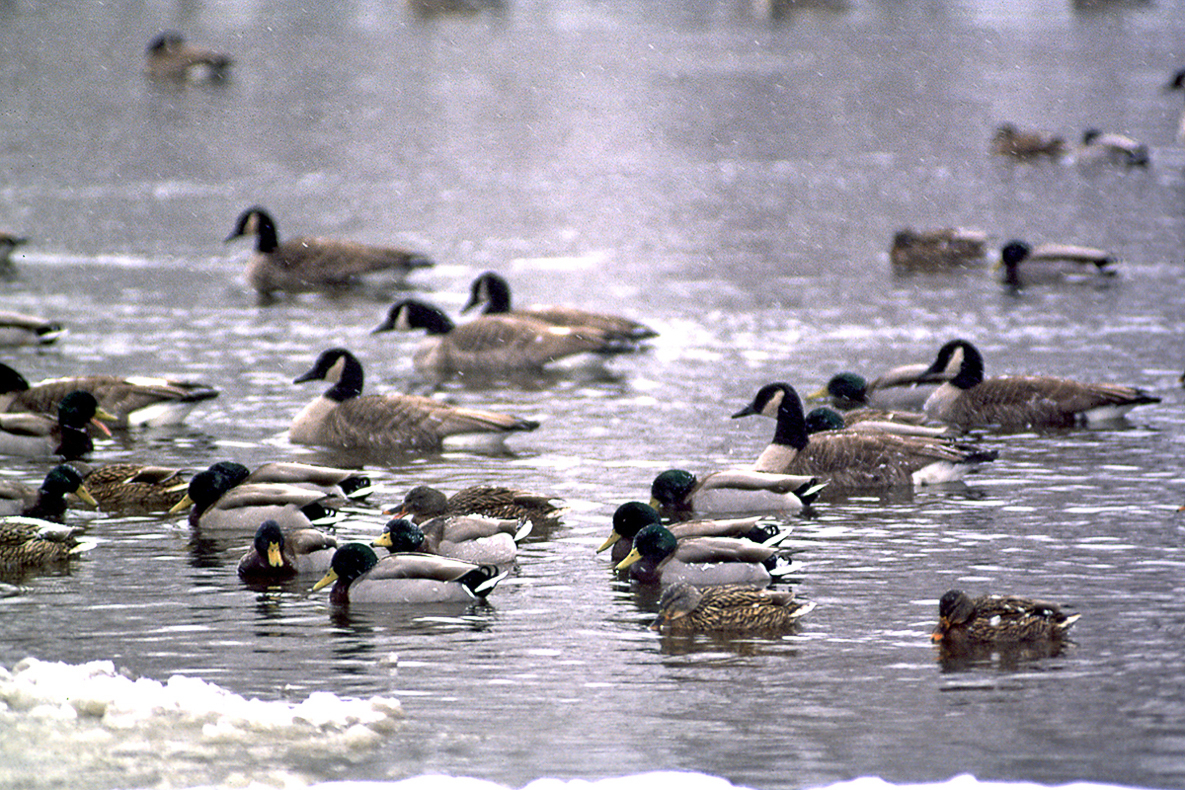Michigan DNR biologists discuss effects of milder winter on wildlife
Looking out your window, do you find yourself saying, “This winter is different?”
Remembering last winter, areas of Michigan had not inches, but feet of snow on the ground by mid-November. In stark contrast, this winter, many parts of Michigan didn’t receive any significant snowfall that stayed on the ground, until after Christmas.
With the effects of one of the strongest El Nino weather patterns on record – warmer Pacific Ocean waters producing atmospheric changes in weather thousands of miles away – this winter certainly is different.
As a result, weather forecasters are predicting above-average temperatures and drier than normal winter conditions across the northern tier of the country, including Michigan.
Michigan Department of Natural Resources wildlife biologists have been fielding inquiries about how the milder conditions might be affecting wildlife this winter.
“The 2014-2015 Michigan winter had record low temperatures for numerous days,” DNR Wildlife Division Chief Russ Mason said. “Along with those cold temps, winter brought snow depths that challenged even the most adapted wildlife.”
Waterfowl
 Less than a year ago, waterfowl were being negatively affected across Michigan by lakes, rivers and streams freezing completely, or more extensively than usual, leaving smaller areas of open water for ducks and swans to feed. After the last two hard winters, this winter is providing many open water locations.
Less than a year ago, waterfowl were being negatively affected across Michigan by lakes, rivers and streams freezing completely, or more extensively than usual, leaving smaller areas of open water for ducks and swans to feed. After the last two hard winters, this winter is providing many open water locations.
“Instead of ducks being concentrated in small areas, ducks and swans have good amounts of open water in a mild winter, giving them room to forage and find the food they need,” said Barbara Avers, a DNR waterfowl and wetlands specialist.
The last two winters resulted in some malnourished or dead waterfowl being trapped on the ice, unable to fly. Not this winter.
Smaller mammals
Squirrels never take a break. Read more





 Less than a year ago, waterfowl were being negatively affected across Michigan by lakes, rivers and streams freezing completely, or more extensively than usual, leaving smaller areas of open water for ducks and swans to feed. After the last two hard winters, this winter is providing many open water locations.
Less than a year ago, waterfowl were being negatively affected across Michigan by lakes, rivers and streams freezing completely, or more extensively than usual, leaving smaller areas of open water for ducks and swans to feed. After the last two hard winters, this winter is providing many open water locations.



